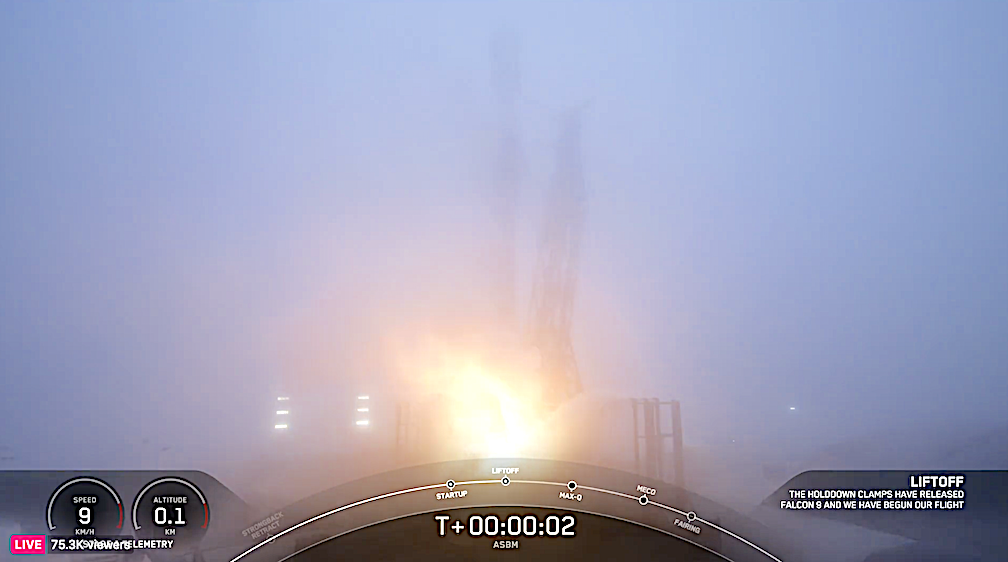
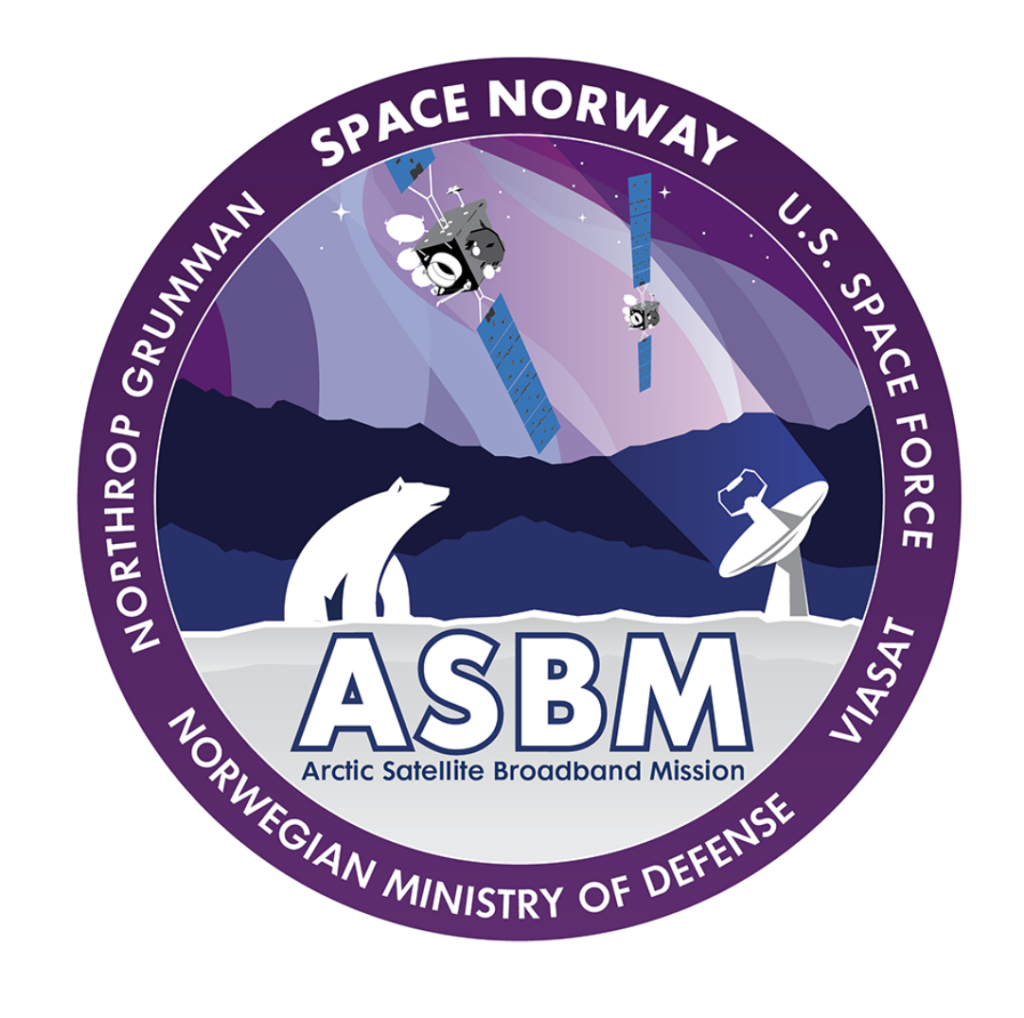
With one million pounds of fuel a foggy California Pacific Ocean site was the scene of SpaceX’s launch of Space Norway Arctic Satellite Broadband mission. Liftoff was exactly at 7:02 PDT from Space Launch Complex 4E (SLC-4E) at Vandenberg Space Force Base in California.

Following stage separation, the first stage landed on the Of Course I Still Love You droneship, which is stationed in the Pacific Ocean.
This is the 22nd flight of the first stage booster supporting this mission, which previously launched Crew-1, Crew-2, SXM-8, CRS-23, IXPE, Transporter-4, Transporter-5, Globalstar FM15, ISI EROS C-3, Korea 425, Maxar 1, and 10 Starlink missions.
The U.S. Air Force provides the Extremely High Frequency eXtended Data Rate payloads on ASBM satellites as part of the Enhanced Polar System Recapitalization (EPS-R) program.
The Enhanced Polar System (EPS) provides protected tactical extremely high frequency (EHF) satellite communications in the North Polar Region. EPS is the next-generation tactical SATCOM system that replaces the Interim Polar System (IPS) and serves as a polar adjunct to the Advanced EHF (AEHF) satellite constellation. The EPS Recapitalization (EPS-R) program will extend the polar capability provided by EPS until the fielding of the next-generation Protected Tactical SATCOM (PTS) system expected to launch in the early 2030s.
SpaceX is finally ready for Space Norway’s Arctic Satellite Broadband Mission
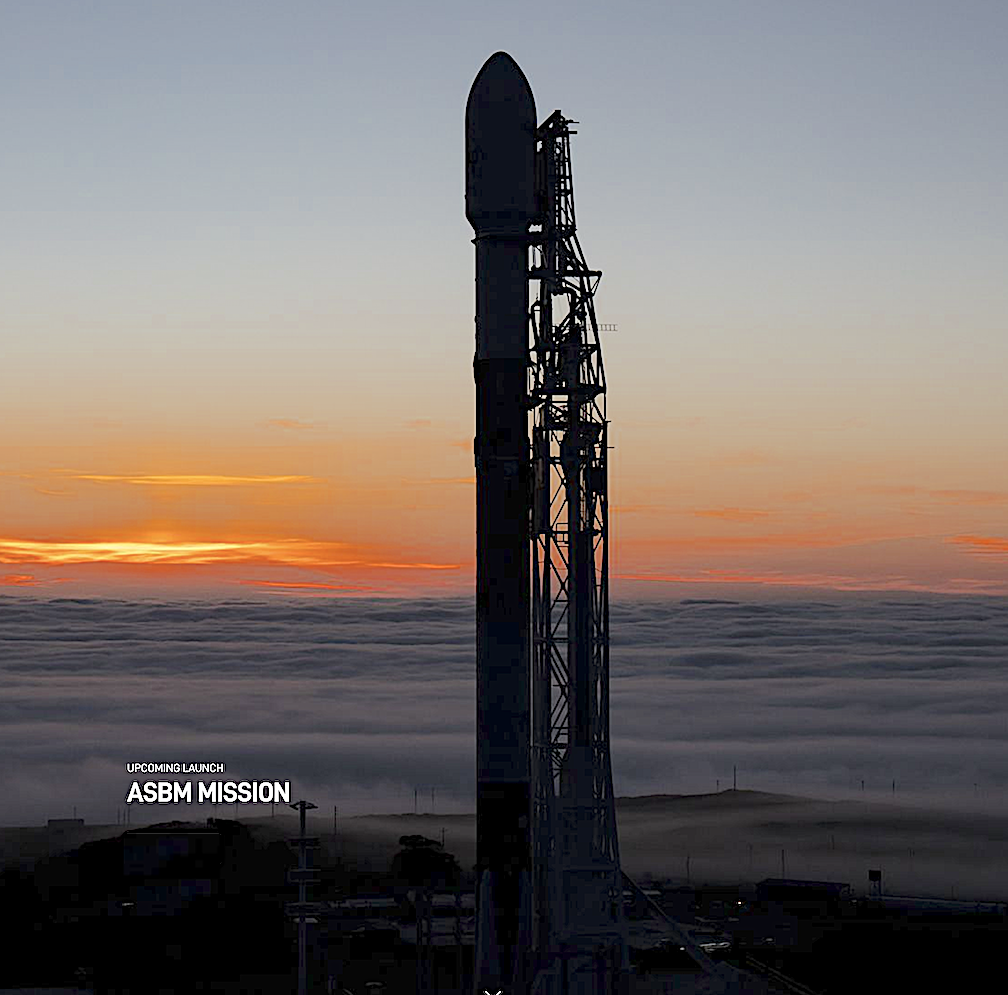
SpaceX is targeting Sunday, August 11 for a Falcon 9 launch of the Space Norway Arctic Satellite Broadband Mission (ASBM) to Molniya transfer orbit from Space Launch Complex 4E (SLC-4E) at Vandenberg Space Force Base in California. Liftoff is targeted for 7:02 p.m. PT. If needed, a backup opportunity is available on Monday, August 12 at 6:58 p.m. PT.
A live webcast of this mission will begin about 15 minutes prior to liftoff, which you can watch here and on X @SpaceX.
This is the 22nd flight of the first stage booster supporting this mission, which previously launched Crew-1, Crew-2, SXM-8, CRS-23, IXPE, Transporter-4, Transporter-5, Globalstar FM15, ISI EROS C-3, Korea 425, Maxar 1, and 10 Starlink missions. Following stage separation, the first stage will land on the Of Course I Still Love You droneship, which will be stationed in the Pacific Ocean.
SpaceX to launch Arctic Satellite Broadband Mission August 11-12
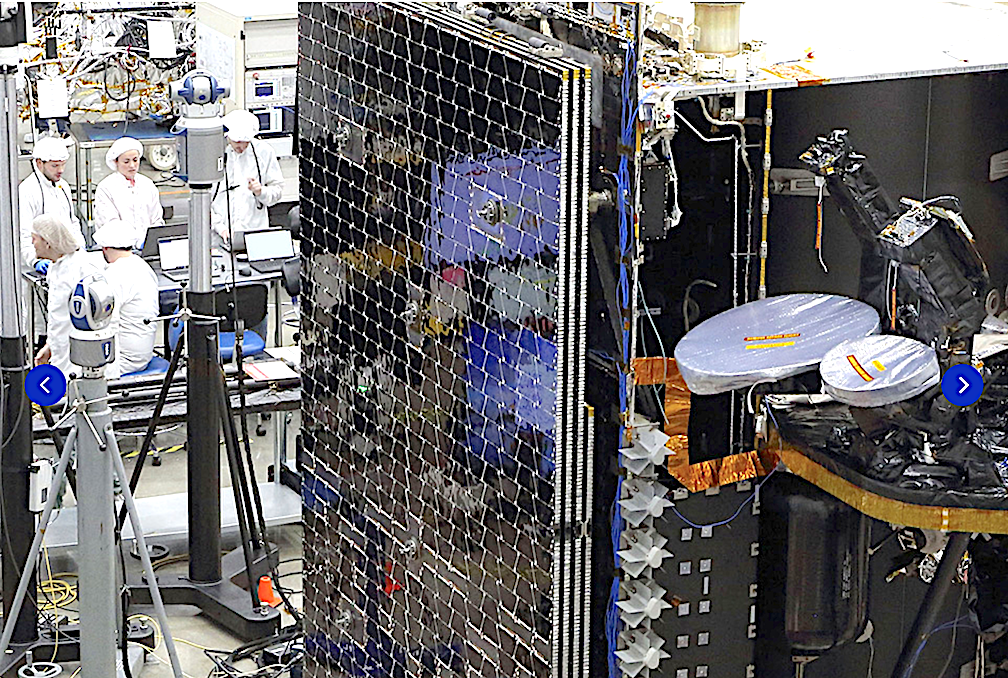
After a delay from the original launch date of July 15th, 2024, SpaceX Falcon 9 rocket will launch the Arctic Satellite Broadband Mission August 11-12, consisting of two satellites owned by Space Norway. The Falcon 9 will launch the two Northrop Grumman-built satellites into a highly elliptical orbit that lingers over the Arctic region. The satellites carry communications payloads for the Norwegian Ministry of Defense, the U.S. Space Force, and Inmarsat.
The launch will take place at SLC-4E, Vandenberg Space Force Base, California, at 7 p.m. PDT (10 p.m. EDT, 0200 UTC).
ASBM (Arctic Satellite Broadband Mission) 1 & 2 are two twin satellites built by Northrop Grumman for Space Norway, in cooperation with Inmarsat and the Norwegian Ministry of Defence.
They are designed to bring mobile broadband coverage in the Arctic for both civilians and military.
EPS-R serves as a prime example of how SSC, U.S. Space Force, and its allied partners are stronger together to deliver valued space capabilities on both fronts. The ASBM mission is scheduled for launch from Vandenberg Space Force Base, California aboard a SpaceX launch vehicle in 2024.
“The accomplishment of this key milestone was truly a joint effort and speaks to the outstanding teamwork between Northrop Grumman and our EPS-R program office. The team received and coordinated an enormous amount of technical data which was critical to verify that all segment and element requirements were met. We look forward to the new ground system entering operations,” said 1st Lt. Brooke Kunzelman, SSC EPS-R Ground Segment lead.
The US Air Force provides the Extremely High Frequency eXtended Data Rate payloads on ASBM satellites as part of the Enhanced Polar System Recapitalization (EPS-R) program.
SpaceX to launch Northrop Gumman’s Arctic Satellite Broadband Mission for Space Norway
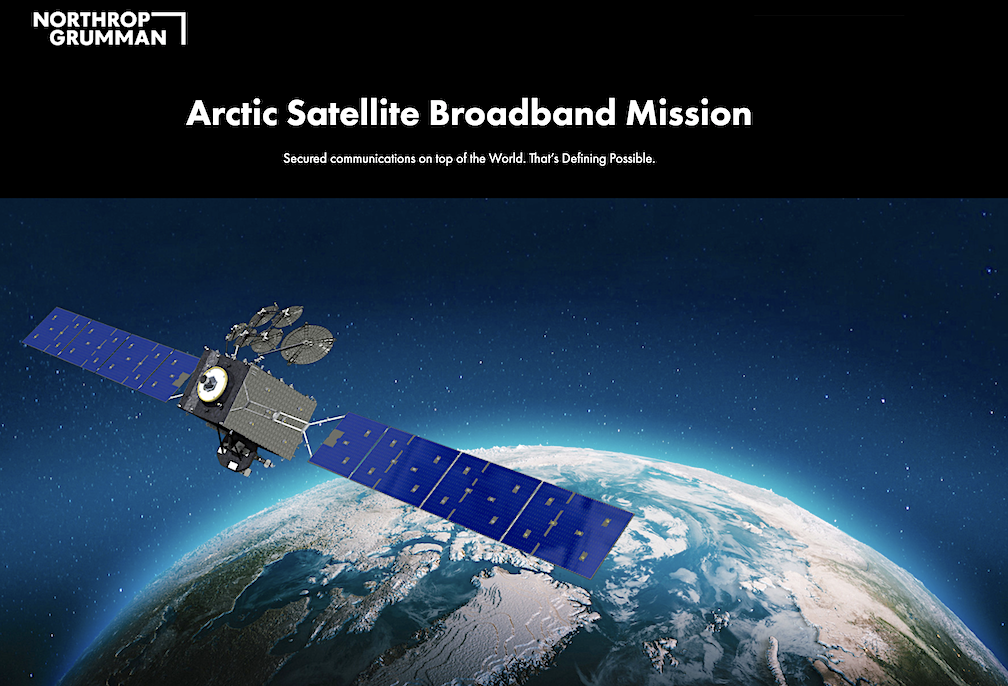
SpaceX’s Falcon 9 will launch ASBM (Arctic Satellite Broadband Mission) 1 & 2, two twin satellites built by Northrop Grumman for Space Norway, in cooperation with Inmarsat and the Norwegian Ministry of Defence, on Monday, July 15th, 2024 from 8:40 PM – 9:30 PM PDT from Space Launch Complex 4E, Vandenberg SFB, California. They are designed to bring mobile broadband coverage in the Arctic for both civilians and military and the launch costs $52 million.

SSC’s EPS-R payloads will be hosted aboard the Arctic Satellite Broadband Mission (ASBM) being
procured by Space Norway. SSC’s continued success with EPS-R stems, in part, from its international partnered relationship with the Norway Ministry of Defence and Space Norway.

EPS-R serves as a prime example of how SSC, U.S. Space Force, and its allied partners are stronger together to deliver valued space capabilities on both fronts. The ASBM mission is scheduled for launch from Vandenberg Space Force Base, California aboard a SpaceX launch vehicle in 2024.
“The accomplishment of this key milestone was truly a joint effort and speaks to the outstanding teamwork between Northrop Grumman and our EPS-R program office. The team received and coordinated an enormous amount of technical data which was critical to verify that all segment and element requirements were met. We look forward to the new ground system entering operations,” said 1st Lt. Brooke Kunzelman, SSC EPS-R Ground Segment lead.
The U.S. Air Force provides the Extremely High Frequency eXtended Data Rate payloads on ASBM satellites as part of the Enhanced Polar System Recapitalization (EPS-R) program.
The Enhanced Polar System (EPS) provides protected tactical extremely high frequency (EHF) satellite communications in the North Polar Region. EPS is the next-generation tactical SATCOM system that replaces the Interim Polar System (IPS) and serves as a polar adjunct to the Advanced EHF (AEHF) satellite constellation. The EPS Recapitalization (EPS-R) program will extend the polar capability provided by EPS until the fielding of the next-generation Protected Tactical SATCOM (PTS) system expected to launch in the early 2030s.
